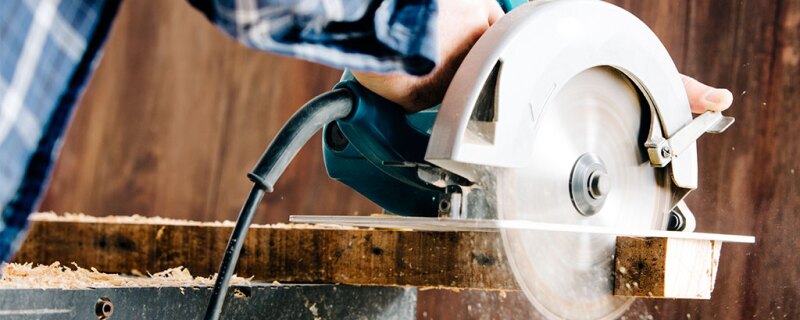Working with saws is extremely dangerous. Improper usage can lead to cuts, lacerations, injuries, and even worse, amputations. It is important to understand the types of saws and how to use them. Incidents from powered cutting tools are of the highest rate for ‘struck by’ accidents in construction.
Here are some safety tips for protecting you and your co-workers while operating powered saws:
- Follow the manufacturer’s guidelines for safety precautions.
- Train each employee on how to use power saws.
- Always check power cords prior to use. Check for frayed wires, cuts in the protective sheathing, ground plugs, and areas where extension cords need to be run for saws.
- Make sure all electrical cords are out of the way of the cutting path.
- Establish a secure and good footing when operating a saw.
- Make sure there is room around the cutting area and good housekeeping measures are in place.
- Use the appropriate blade for the material you will be cutting.
- Prior to cutting, set the blade depth 1/8” deeper than your material.
- Ensure guards are in place. Guards should never be tampered with or removed. Guards are there for a reason.
- Never cut with a dull blade.
- Always unplug saws when you have to change a blade.
- Beware of potential staples, nails, knots, sap, or warped boards while cutting. Never remove the blade from the material while it is cutting.
- When carrying a saw, never carry it by the blade and always keep your finger out of the trigger area to prevent accidental operation.
- Never cut alone. Someone should be present within shouting range in the event of an emergency.
- Use a push stick for material stock and never reach over a saw while it is operating.
- Do not wear jewelry, loose clothing, and keep long hair tied back.
- Keep the hands out of the line of cutting.
Kickbacks are a major hazard while operating saws. This occurs when the blade catches the stock and throws it back toward the operator. Kickbacks can result if the blade height is not correct or if the blade is not maintained properly. This occurs more often when ripping is being done rather than cross-cutting.
Proper personal protective equipment such as eyeglasses and hearing protection should always be worn when operating any type of saw.
Always follow safe handling practices when operating power saws.






